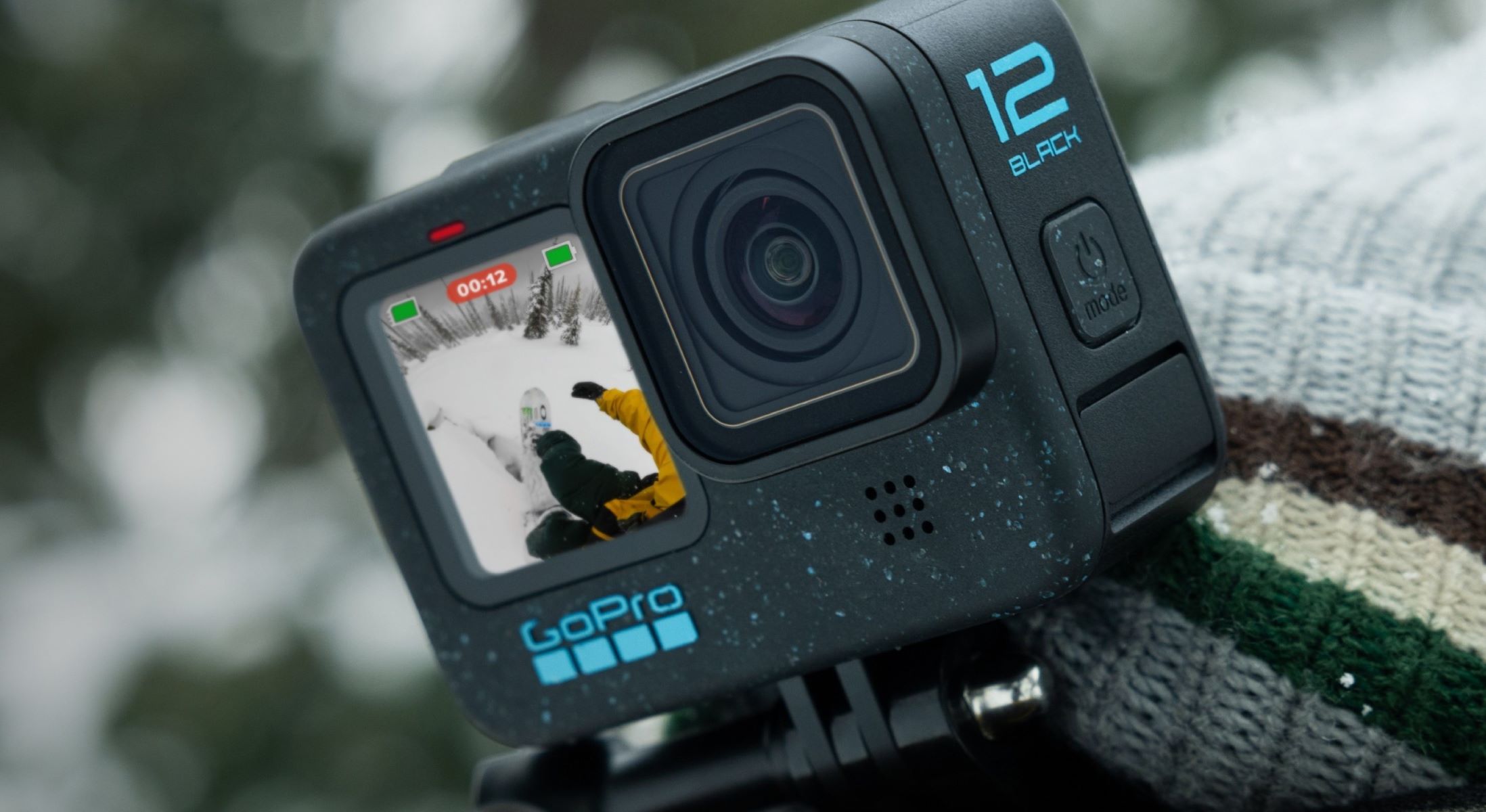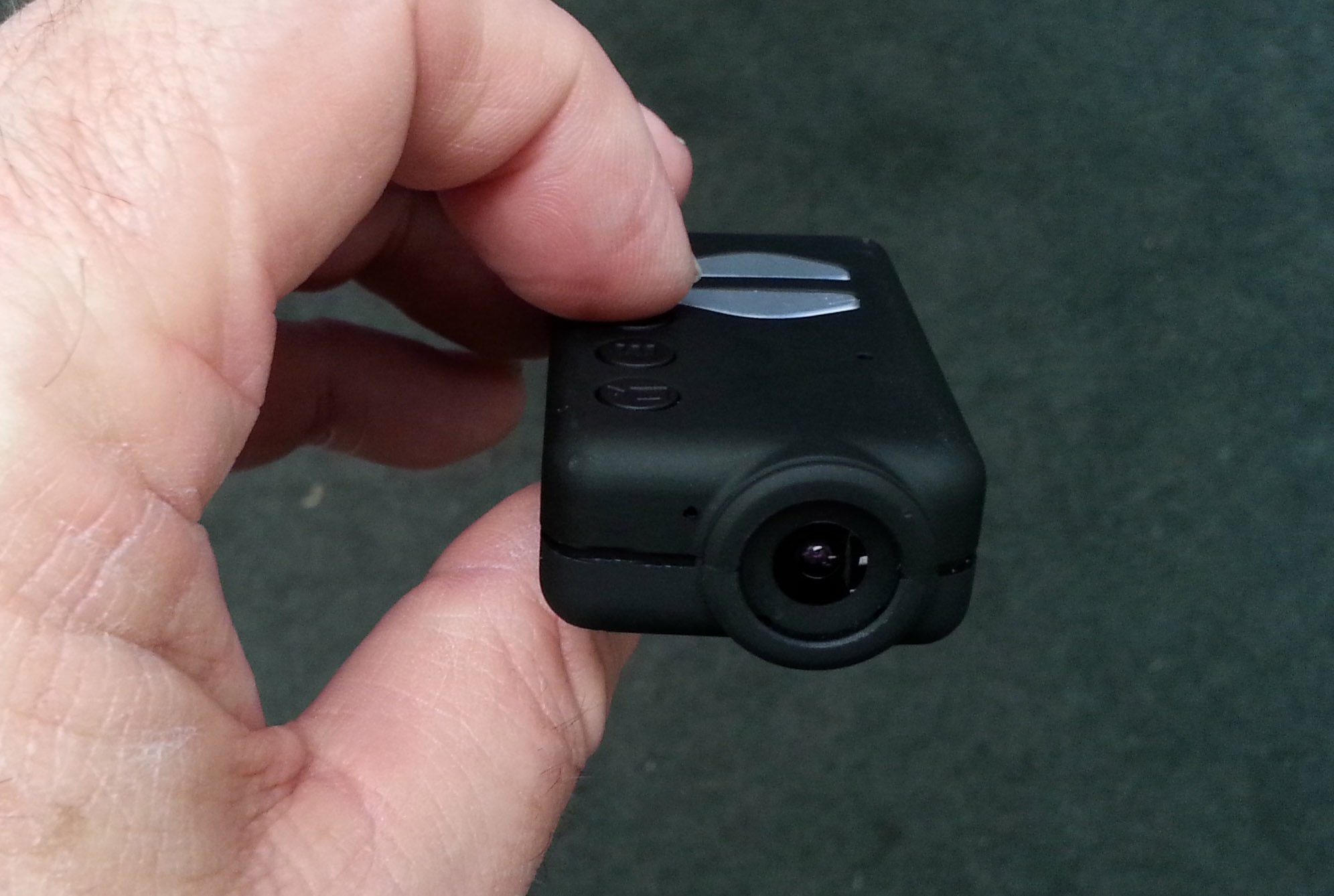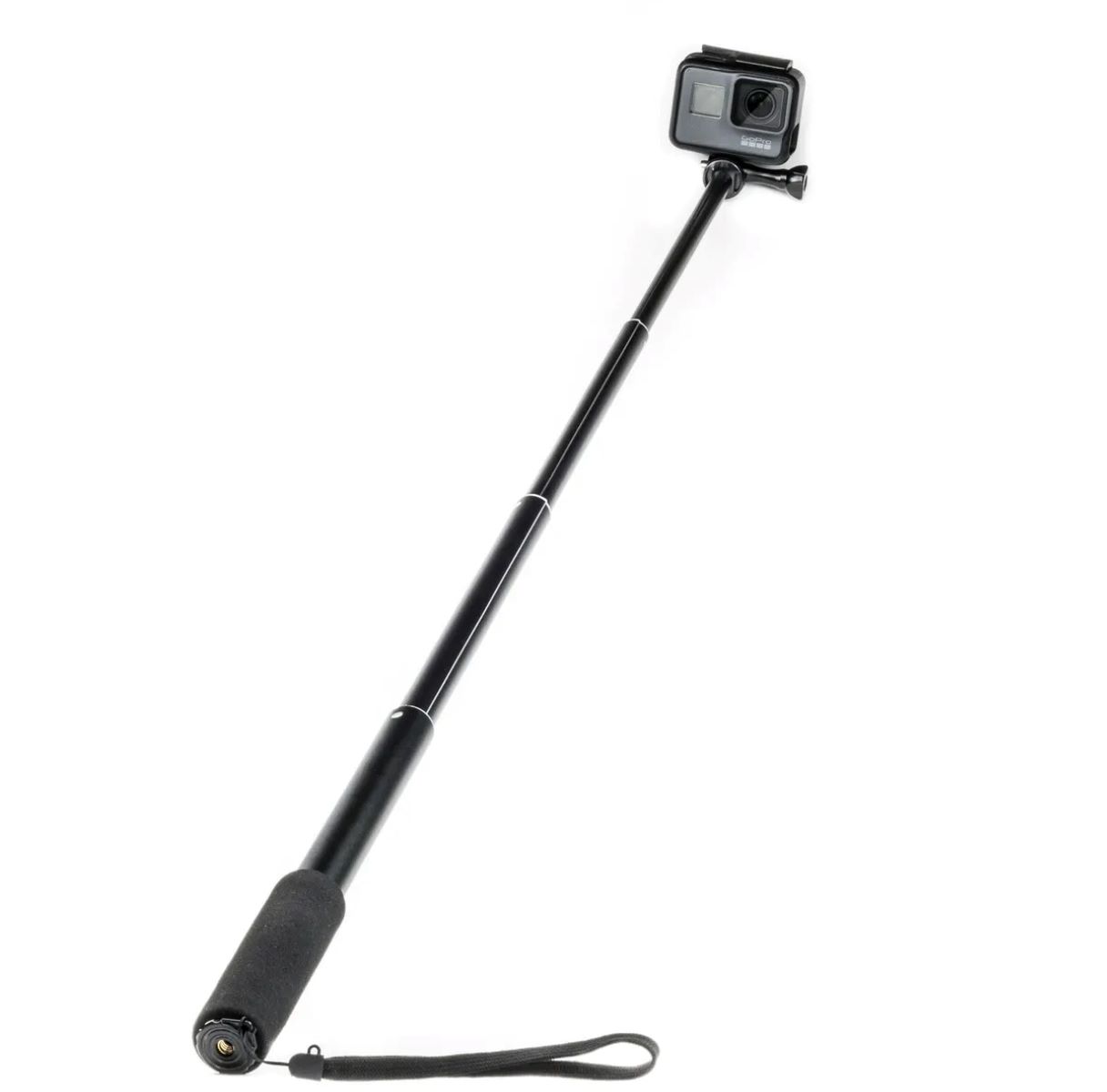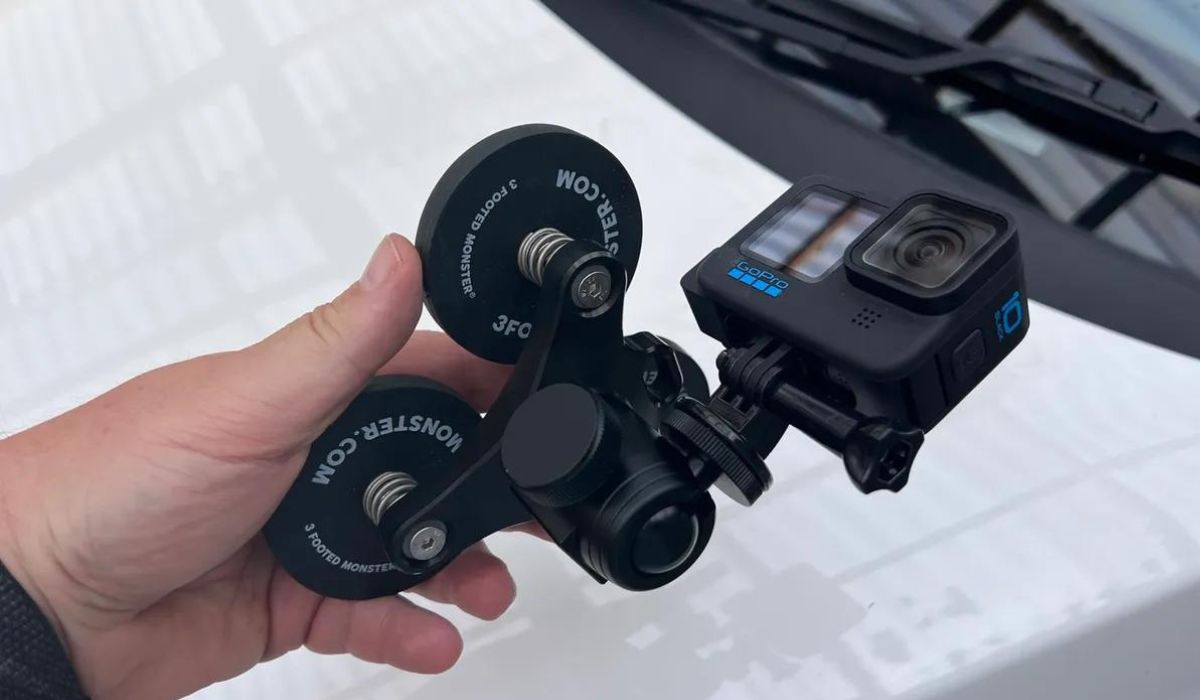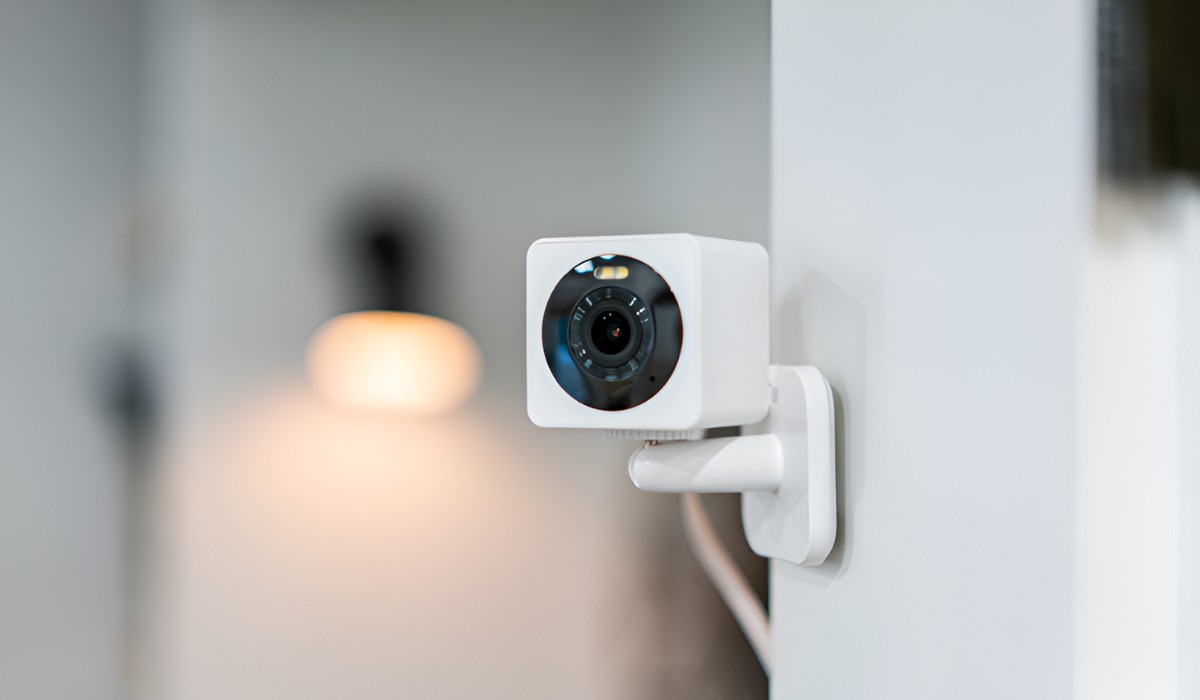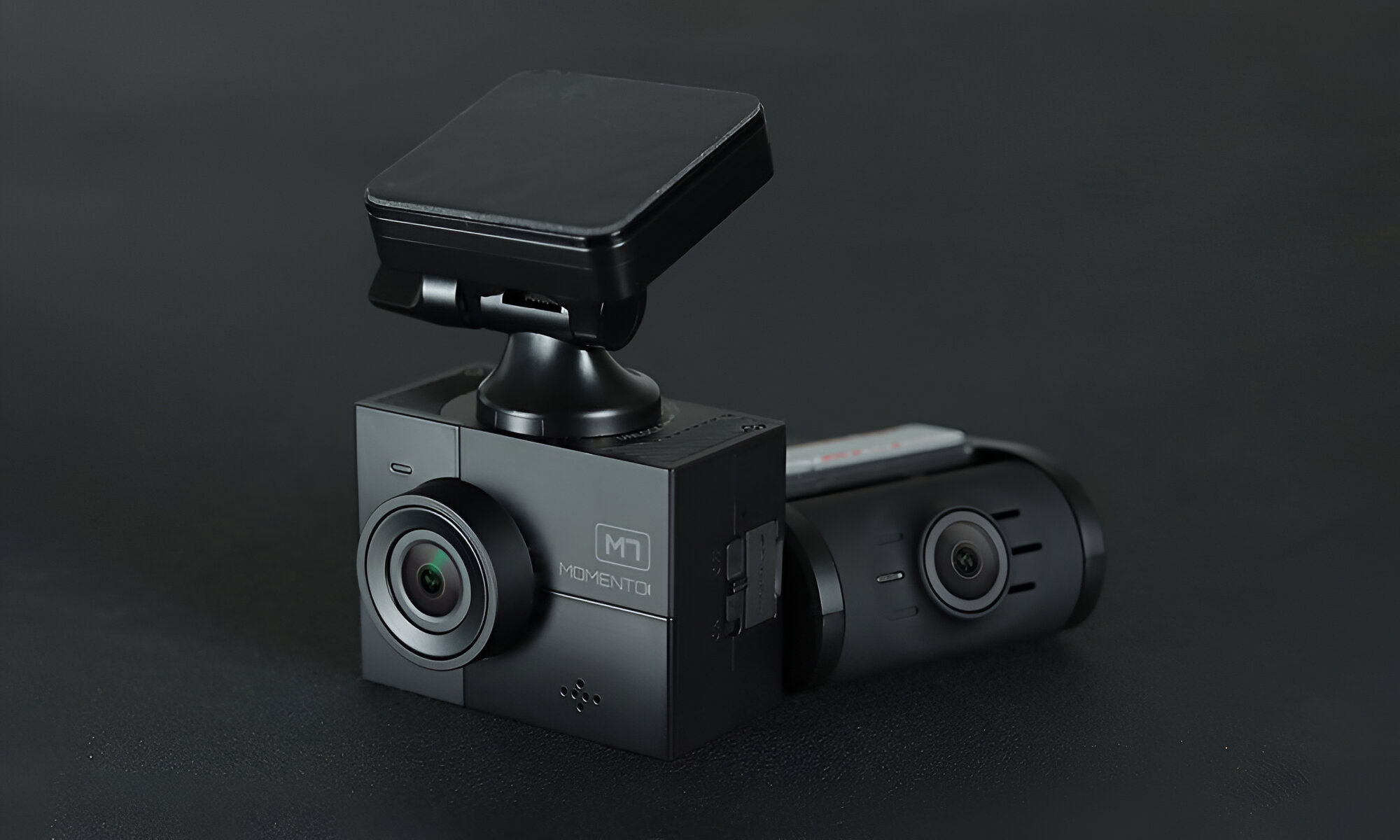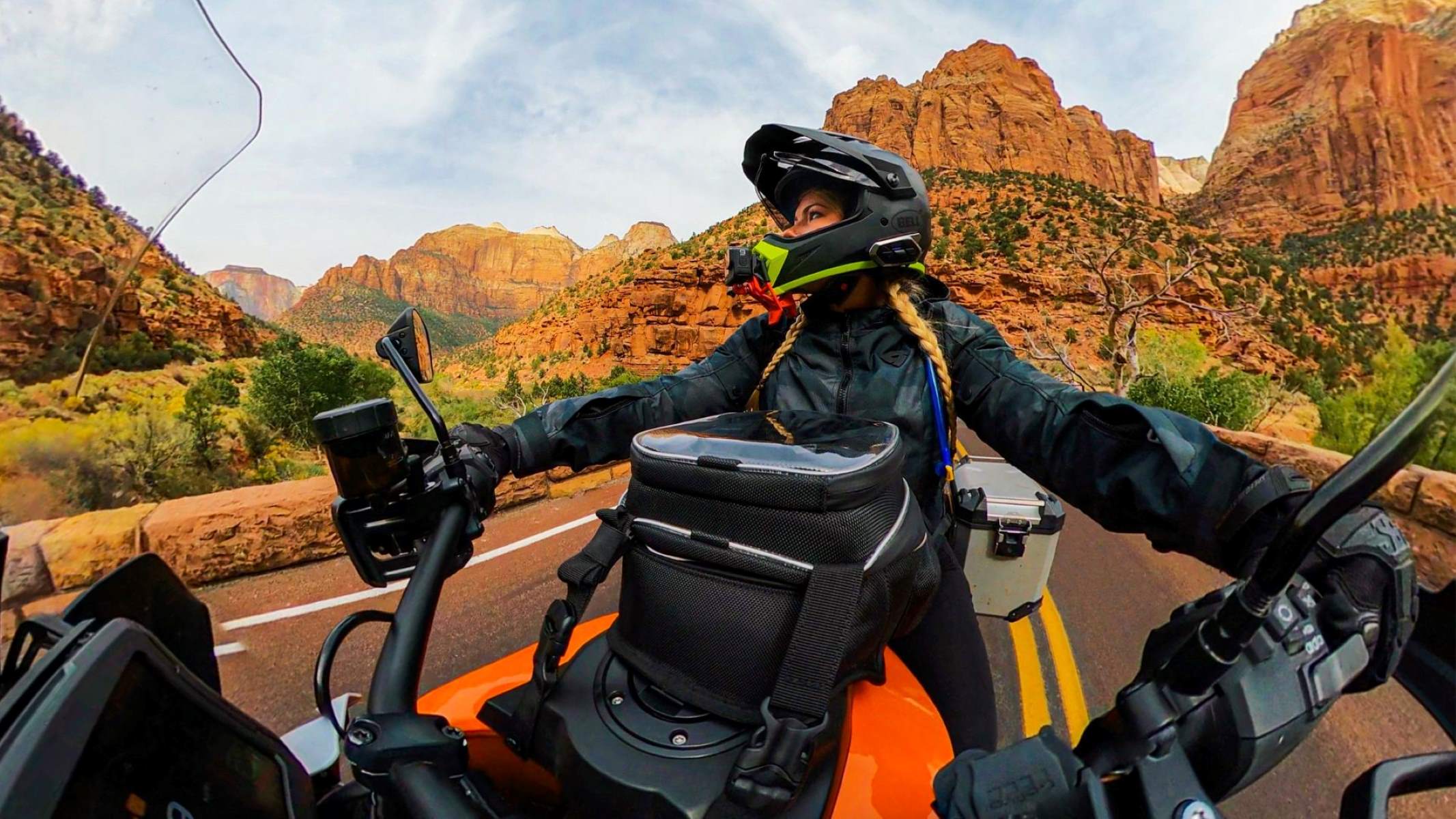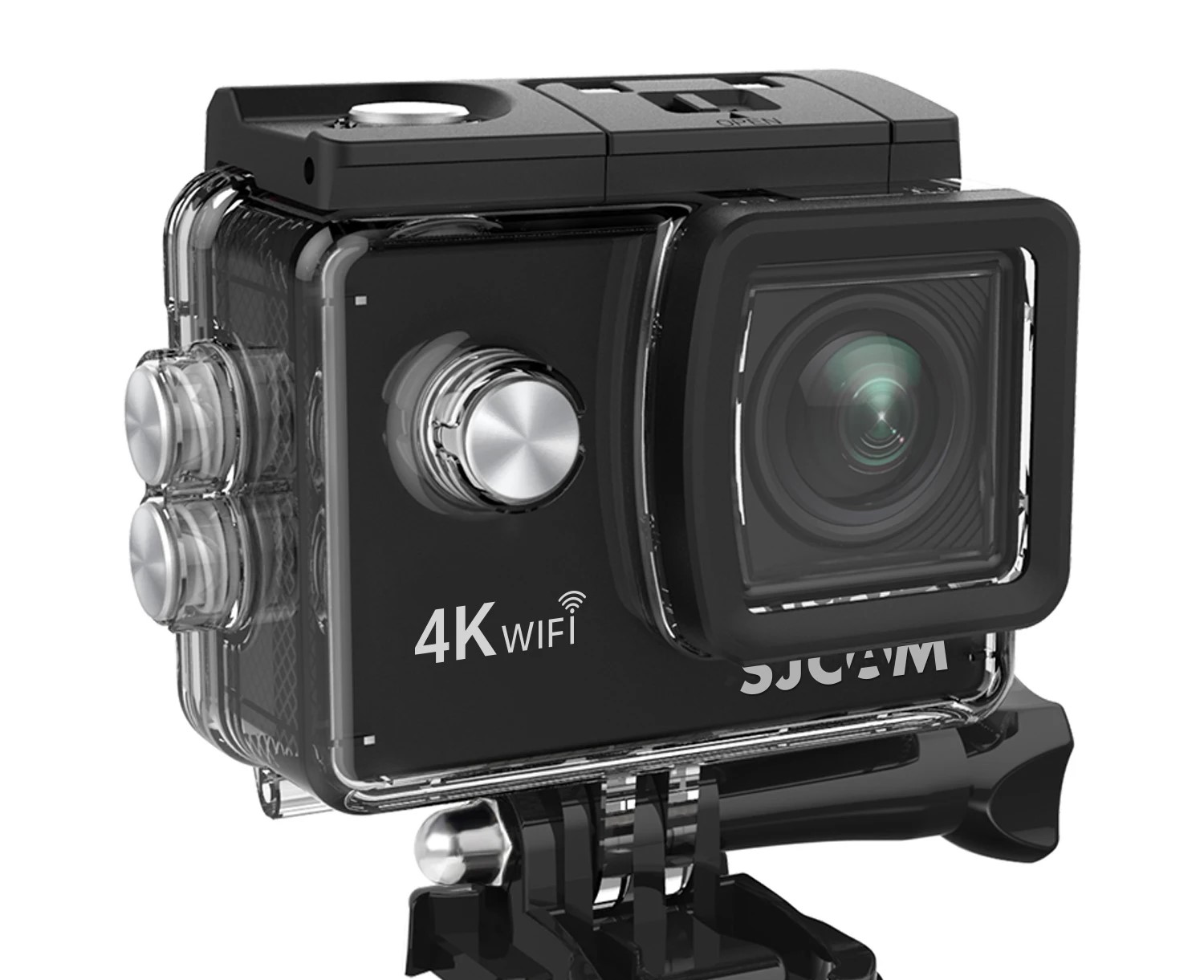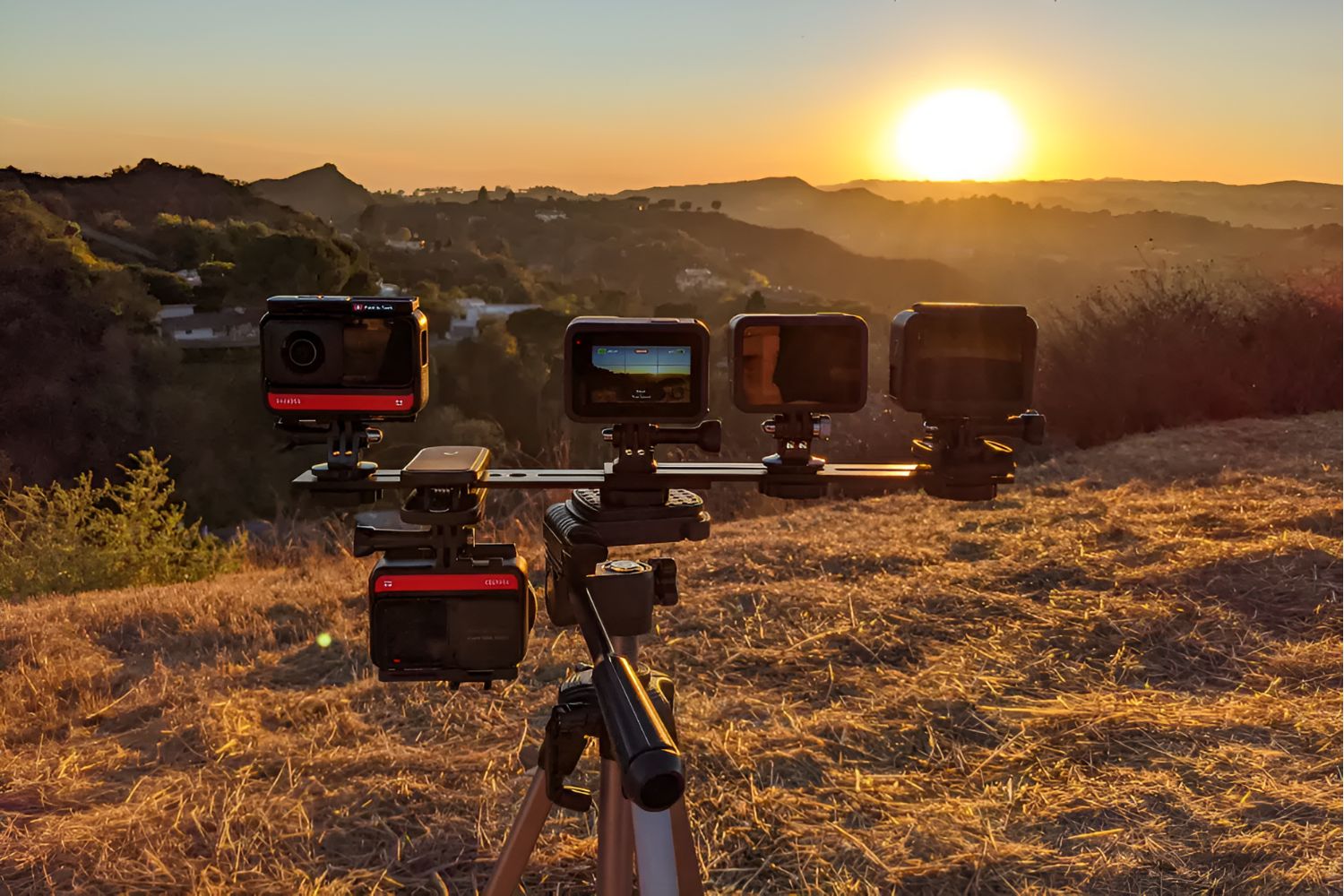Introduction
Choosing the Right Action Camera
When it comes to capturing your adventures in stunning detail, nothing beats an action camera. Whether you're shredding down a mountain trail, surfing the waves, or exploring a new city, these compact and rugged devices are designed to withstand the rigors of any adrenaline-fueled activity. Before delving into the setup process, it's crucial to select the right action camera that aligns with your specific needs and budget.
Action cameras come in various shapes, sizes, and capabilities, so it's essential to consider the following factors when making your choice:
-
Resolution and Frame Rate: Higher resolution and frame rates allow for crisper and smoother footage, especially during fast-paced activities.
-
Durability and Waterproofing: Look for a camera that can withstand the elements and is waterproof for underwater adventures.
-
Mounting Options: Consider the types of mounts and accessories available for the camera, ensuring they are compatible with your intended activities.
-
Battery Life: A longer battery life is essential for extended recording sessions without the need for frequent recharging.
-
Image Stabilization: This feature minimizes shaky footage, providing professional-looking results even in challenging environments.
-
Additional Features: From voice control and GPS to live streaming capabilities, explore the extra features that may enhance your filming experience.
By carefully evaluating these aspects, you can make an informed decision and invest in an action camera that will seamlessly integrate into your adventures, providing breathtaking footage for years to come. Now that you've selected the perfect action camera, it's time to unbox and set it up for your next escapade.
Choosing the Right Action Camera
When embarking on the journey of selecting an action camera, it’s essential to consider various factors to ensure that the chosen device aligns with your specific needs and preferences. The market offers a wide array of action cameras, each boasting unique features and capabilities, making the selection process both exciting and challenging. By carefully evaluating the following aspects, you can make an informed decision and invest in a camera that will elevate your filming experience.
- Resolution and Frame Rate: The resolution and frame rate of an action camera significantly impact the quality of the footage. Higher resolutions, such as 4K or even 5.3K, coupled with elevated frame rates, allow for incredibly detailed and smooth videos, especially during fast-paced activities like skiing or mountain biking.
- Durability and Waterproofing: Given the rugged nature of adventure sports, it’s imperative to choose a camera that can withstand shocks, vibrations, and harsh environmental conditions. Additionally, if your adventures involve water activities, opting for a waterproof camera is paramount to capturing stunning underwater footage.
- Mounting Options: The versatility of mounting options greatly influences the camera’s usability across different activities. Whether you need a helmet mount for biking, a chest harness for snowboarding, or a waterproof housing for diving, ensuring that the camera is compatible with a wide range of mounts is crucial.
- Battery Life: Extended battery life is indispensable for uninterrupted filming during long excursions. A camera with a robust battery can ensure that you capture every exhilarating moment without the need for frequent recharging, allowing you to stay fully immersed in your adventures.
- Image Stabilization: Action-packed activities often result in shaky footage. Therefore, opting for a camera with reliable image stabilization technology is essential to produce smooth, professional-looking videos, even in the most challenging environments.
- Additional Features: From voice control and GPS to live streaming capabilities, exploring the additional features offered by different cameras can significantly enhance your filming experience, providing added convenience and creativity.
By carefully considering these factors, you can narrow down your options and select an action camera that seamlessly integrates into your adventures, capturing every heart-pounding moment with unparalleled clarity and detail.
Unboxing and Initial Setup
Upon acquiring your new action camera, the excitement of unboxing and setting it up for the first time is an integral part of the overall experience. The unboxing process unveils not only the camera itself but also a myriad of accessories and components that will enhance its functionality and adaptability to various activities. Here’s a comprehensive guide to unboxing and initiating the setup of your action camera:
1. Unveiling the Contents: Carefully open the packaging and take stock of all the items included. In addition to the camera, you may find mounts, adhesive pads, straps, batteries, chargers, and user manuals. Each component plays a vital role in maximizing the camera’s potential across different scenarios.
2. Charging the Battery: Before diving into the setup process, ensure that the camera’s battery is fully charged. This step is crucial to prevent any interruptions during the initial setup and ensures that the camera is ready for immediate use.
3. Powering On the Camera: Once the battery is charged, power on the camera to begin the initial setup. Familiarize yourself with the camera’s interface, buttons, and screen, as this will be essential for navigating through the setup process and accessing various settings and modes.
4. Language and Date Settings: Follow the on-screen prompts to select your preferred language and set the date and time. These settings are fundamental for organizing and categorizing your footage, ensuring that each adventure is accurately documented.
5. Connecting to a Mobile Device: Many modern action cameras offer the convenience of connecting to a mobile device via Wi-Fi or Bluetooth. This feature allows for seamless control of the camera, live preview of the footage, and easy transfer of media for editing and sharing.
6. Updating Firmware: Check if there are any firmware updates available for your camera and proceed with the update if necessary. Firmware updates often introduce new features, improve performance, and address any existing issues, ensuring that your camera operates at its full potential.
7. Exploring Basic Settings: Familiarize yourself with the basic settings such as resolution, frame rate, and field of view. Understanding and customizing these settings according to your preferences and the nature of your activities will significantly impact the quality and style of your footage.
By meticulously unboxing and initiating the setup of your action camera, you lay the foundation for seamless and exhilarating filming experiences, empowering you to capture every thrilling moment with precision and clarity.
Mounting and Positioning the Camera
Mounting your action camera effectively is crucial for capturing captivating footage that truly immerses viewers in your adventures. The positioning of the camera plays a pivotal role in framing the action and conveying the intensity of the experience. Whether you’re hurtling down a mountain trail, carving through waves, or exploring a bustling city, the way you mount and position your camera can make all the difference. Here’s a comprehensive guide to mounting and positioning your action camera for various activities:
1. Selecting the Right Mount: Action cameras are compatible with a diverse range of mounts, each tailored to specific activities. Whether it’s a helmet mount for biking, a chest harness for skiing, or a suction cup mount for car footage, choosing the appropriate mount is essential for stability and optimal perspective.
2. Securing the Mount: Once you’ve chosen the mount, ensure that it is securely fastened to the desired location. A stable mount is crucial for minimizing vibrations and maintaining a steady perspective, resulting in smooth and professional-looking footage.
3. Considering the Field of View: Action cameras offer various field of view (FOV) settings, such as wide, medium, and narrow. The FOV determines the extent of the scene captured in the frame. Selecting the appropriate FOV based on the activity and desired perspective is essential for conveying the immersive nature of the experience.
4. Adjusting the Camera Angle: Experiment with different camera angles to find the most compelling perspective for your footage. Tilting the camera slightly upward or downward can dramatically alter the dynamics of the shot, adding depth and intensity to the visuals.
5. Ensuring Stability: Stability is paramount for producing high-quality footage. Whether you’re mounting the camera on a helmet, chest, bike, or any other surface, ensuring that the camera is firmly secured and stable is essential for smooth and immersive footage.
6. Considering Safety and Comfort: While mounting the camera, prioritize safety and comfort. Ensure that the mount does not obstruct your movement or compromise your safety during the activity. Additionally, use tethers or safety lanyards in high-risk scenarios to prevent the loss of the camera in case of unexpected detachment.
By meticulously selecting, securing, and positioning the camera for each activity, you can capture stunning footage that encapsulates the essence of your adventures, allowing viewers to experience the thrill alongside you. The next step in maximizing your action camera’s potential involves configuring the camera settings to ensure optimal performance and capture stunning visuals.
Configuring Camera Settings
Optimizing the camera settings is essential for harnessing the full potential of your action camera and capturing stunning visuals that truly encapsulate the excitement of your adventures. From resolution and frame rate to exposure and white balance, understanding and customizing the camera settings according to the specific requirements of each activity is crucial. Here’s a detailed guide to configuring the camera settings for optimal performance:
1. Resolution and Frame Rate: Selecting the appropriate resolution and frame rate is fundamental for achieving the desired visual quality and style. Higher resolutions such as 4K or 5.3K coupled with elevated frame rates offer incredibly detailed and smooth footage, ideal for fast-paced activities and cinematic captures.
2. Exposure and White Balance: Understanding exposure and white balance settings is crucial for adapting to different lighting conditions. Adjusting the exposure compensation and white balance ensures that the colors are accurate and the exposure levels are optimized, resulting in vibrant and true-to-life visuals.
3. Protune or Manual Settings: Many action cameras offer advanced settings such as Protune or manual mode, providing greater control over parameters like ISO, shutter speed, and color profile. Exploring these settings allows for fine-tuning the camera to achieve specific visual aesthetics and professional-grade results.
4. Image Stabilization: Enabling image stabilization is essential for minimizing shaky footage, especially during high-action activities. Whether it’s electronic stabilization or gyroscopic stabilization, this feature ensures smooth and professional-looking videos, enhancing the overall viewing experience.
5. Audio Settings: Consider adjusting the microphone settings to optimize audio capture based on the surrounding noise levels and the desired audio quality. Some cameras offer wind noise reduction and external microphone support, enhancing the overall audiovisual experience.
6. Customizing Quick Capture and One-Touch Control: Familiarize yourself with quick capture and one-touch control features, allowing for seamless and immediate recording with a single press of a button. Understanding and customizing these features ensures that you never miss a moment of the action.
By delving into the camera settings and customizing them according to the specific requirements of each activity, you can elevate your filming experience and capture breathtaking visuals that truly convey the intensity and excitement of your adventures. The next step involves understanding the various shooting modes offered by the action camera, allowing for versatility and creativity in capturing diverse scenarios.
Understanding Shooting Modes
Shooting modes are pivotal in unleashing the full creative potential of your action camera, offering versatility and adaptability to diverse filming scenarios. Understanding and effectively utilizing the different shooting modes can significantly enhance the quality and style of your footage, allowing you to capture every moment with precision and artistry. Here’s a comprehensive overview of the essential shooting modes commonly offered by action cameras:
1. Video Mode: The standard video mode allows for continuous recording, ideal for capturing the fluidity and dynamism of fast-paced activities. Selecting the appropriate resolution and frame rate is crucial for achieving the desired visual quality and style, whether it’s cinematic 4K footage or high-frame-rate slow-motion sequences.
2. Photo Mode: Photo mode enables the capture of high-resolution still images, perfect for freezing action-packed moments or capturing breathtaking landscapes. Understanding and customizing settings such as exposure, burst mode, and time-lapse can add depth and creativity to your photographic compositions.
3. Time-Lapse Mode: Time-lapse mode offers the ability to condense lengthy events or processes into captivating short clips, adding a unique perspective to your footage. Customizing the interval and duration settings allows for creative control over the time-lapse effect, capturing stunning visual narratives.
4. Burst Mode: Burst mode is designed to capture a rapid series of images in quick succession, ideal for freezing fast-paced action and achieving the perfect shot amidst dynamic movements. Adjusting the burst rate and duration ensures that every split-second moment is impeccably documented.
5. Slow-Motion Mode: Slow-motion mode allows for the dramatic portrayal of high-speed action, emphasizing every intricate detail and fluid movement. Understanding the frame rate settings and the impact on playback speed is essential for achieving the desired slow-motion effect.
6. Looping Mode: Looping mode continuously records footage in a loop, overwriting the oldest segments to ensure that the camera never stops recording. This mode is ideal for capturing ongoing activities without the need to manually manage storage space, providing uninterrupted documentation of extended events.
By familiarizing yourself with the various shooting modes and their customization options, you can unleash your creativity and adapt to diverse filming scenarios with precision and artistry. The next step involves exploring the vast array of accessories available for action cameras, each tailored to enhance specific activities and elevate the filming experience.
Using Accessories for Different Activities
Accessories play a pivotal role in expanding the capabilities of your action camera, allowing you to adapt to various activities and capture stunning footage from unique perspectives. Whether you’re embarking on a high-speed adventure, underwater exploration, or aerial escapades, the right accessories can elevate your filming experience and unlock new creative possibilities. Here’s a comprehensive guide to utilizing accessories tailored for different activities:
1. Mounts and Straps: A diverse range of mounts and straps are available to secure your action camera to different surfaces and gear. From helmet mounts for biking and skiing to chest harnesses for immersive perspectives, selecting the appropriate mounting accessories ensures stability and optimal positioning for dynamic footage.
2. Waterproof Housings: For underwater activities such as snorkeling, diving, or surfing, waterproof housings provide protection for your camera while allowing for stunning underwater captures. These housings are designed to withstand water pressure and ensure that your camera remains fully functional in aquatic environments.
3. Stabilization Tools: Handheld gimbals and stabilizers are indispensable for achieving smooth and steady footage, especially during handheld or moving shots. These accessories minimize vibrations and camera shake, resulting in professional-grade visuals across a wide range of activities.
4. Filters and Lenses: Filters and lenses tailored for action cameras offer creative control over light conditions and visual aesthetics. Neutral density filters, polarizing filters, and fisheye lenses can enhance the color saturation, reduce glare, and expand the field of view, adding depth and character to your footage.
5. Lighting Accessories: In low-light or nighttime scenarios, lighting accessories such as LED lights and external flashes can significantly improve the visibility and quality of your footage. These accessories illuminate the scene, allowing for vibrant and detailed captures even in challenging lighting conditions.
6. Aerial and Vehicle Mounts: Drones, car mounts, and suction cup mounts offer the ability to capture breathtaking aerial and vehicular footage, adding a dynamic and expansive perspective to your videos. These accessories open up new dimensions for storytelling and visual immersion.
By leveraging a diverse array of accessories tailored to different activities, you can expand the creative horizons of your action camera, capturing breathtaking footage from exhilarating angles and perspectives. The next step involves the process of transferring and editing the footage, refining your captures into compelling visual narratives for sharing and reliving your adventures.
Transferring and Editing Footage
Once you’ve captured exhilarating footage with your action camera, the process of transferring and editing the content is essential for refining your captures into compelling visual narratives. Whether it’s showcasing your adventures to friends and family or creating professional-quality content for online platforms, mastering the art of transferring and editing footage is crucial for bringing your stories to life. Here’s a comprehensive guide to the seamless transfer and creative editing of your action camera footage:
1. Transferring Footage to Devices: Most action cameras offer wireless connectivity or USB transfer options for seamless media transfer to smartphones, tablets, or computers. Utilize the dedicated mobile apps or software to initiate the transfer process, ensuring that your footage is readily accessible for editing and sharing.
2. Organizing and Backing Up Footage: Upon transferring the footage, organize the files into categorized folders based on activities, dates, or locations. Implementing a systematic backup strategy, such as cloud storage or external hard drives, ensures that your valuable footage is securely preserved and easily retrievable for future editing and archiving.
3. Choosing Editing Software: Selecting the appropriate editing software is crucial for unleashing your creativity and refining your footage into captivating visual stories. Whether it’s user-friendly mobile apps for on-the-go editing or professional-grade desktop software for intricate post-production, the choice of editing tools significantly impacts the final quality of your content.
4. Editing Techniques: Familiarize yourself with fundamental editing techniques such as trimming, color correction, audio enhancement, and adding transitions. These techniques allow you to refine the pacing, visual aesthetics, and storytelling elements of your footage, creating a cohesive and engaging visual narrative.
5. Adding Music and Sound Effects: Incorporating suitable music and sound effects can elevate the emotional impact and immersive quality of your videos. Selecting tracks that complement the mood and tempo of your adventures, and integrating ambient sounds, enhances the overall viewing experience.
6. Applying Filters and Effects: Experiment with filters, visual effects, and creative overlays to add depth and character to your footage. Whether it’s enhancing the color grading, adding dynamic transitions, or incorporating text and graphics, these elements contribute to the unique visual style of your content.
By mastering the art of transferring and editing your action camera footage, you can transform raw captures into compelling visual narratives, ready to be shared and relived. The seamless integration of accessories, settings, and editing techniques culminates in breathtaking videos that encapsulate the excitement and intensity of your adventures, leaving a lasting impression on your audience.
Conclusion
Embarking on the journey of setting up and utilizing an action camera is not merely about capturing footage; it’s about encapsulating the essence of your adventures and sharing them with the world. From carefully selecting the right action camera to mastering the art of mounting, configuring, and editing, every step in the process contributes to the creation of compelling visual narratives that vividly convey the thrill and excitement of your escapades.
As you venture into the realm of action camera filming, the seamless integration of accessories tailored to different activities opens up a world of creative possibilities, allowing you to capture breathtaking footage from exhilarating angles and perspectives. Understanding and customizing the camera settings and shooting modes further empowers you to adapt to diverse scenarios, ensuring that every moment is impeccably documented with precision and artistry.
Moreover, the process of transferring and editing your footage is where the raw captures truly come to life, refined into compelling visual stories that evoke emotion and leave a lasting impression. Whether it’s showcasing your adventures to friends and family or creating professional-quality content for online platforms, the mastery of editing techniques and the artful application of music, effects, and storytelling elements elevate your videos to captivating visual narratives.
Ultimately, the journey of setting up and utilizing an action camera is a testament to the art of storytelling through visuals. It’s about preserving the exhilaration, beauty, and intensity of your adventures in a form that transcends words, allowing viewers to immerse themselves in the heart-pounding moments and breathtaking landscapes you’ve experienced. Through meticulous setup, creative utilization of accessories, and masterful editing, you have the power to transform your captures into timeless visual tales, ready to be shared and relived, leaving an indelible mark on your audience.
As you continue to explore and push the boundaries of action camera filming, remember that each adventure is an opportunity to capture not just footage, but memories and emotions that endure through the artful storytelling of visuals.







